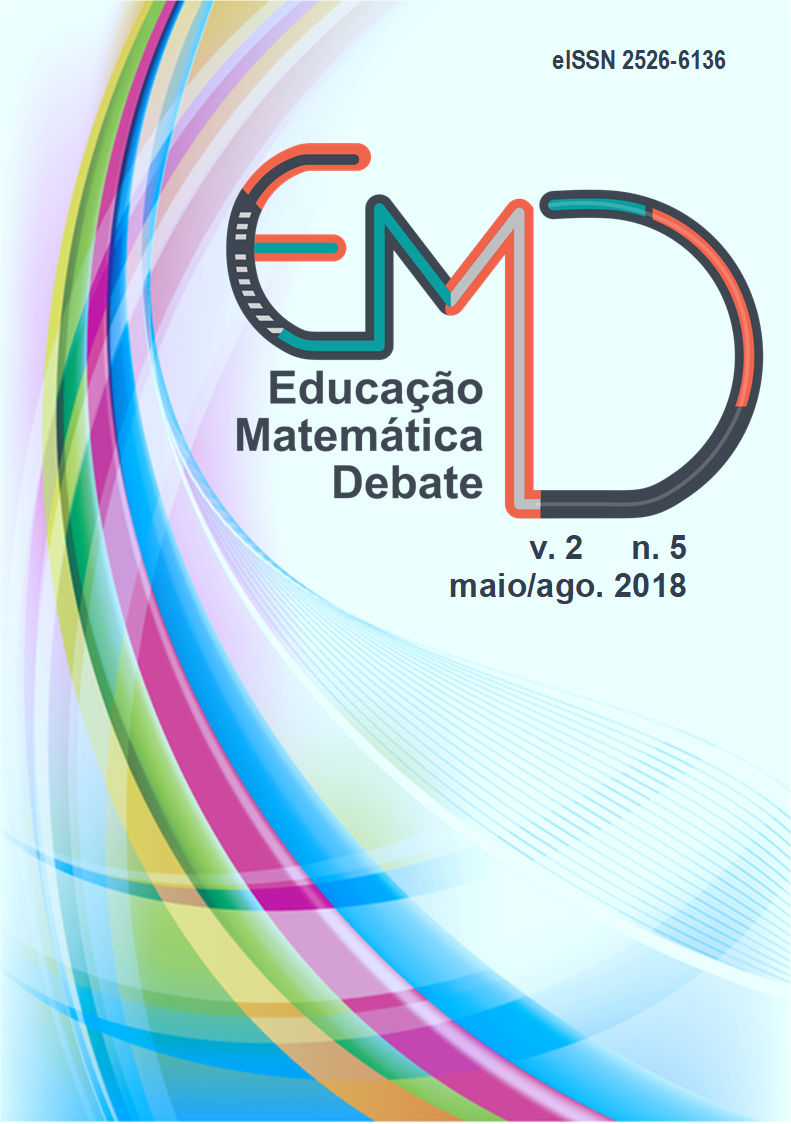Pensamiento numérico: evolución del número cardinal en Educación Infantil
DOI:
10.24116/emd25266136v2n52018a03Palavras-chave:
Pensamiento Numérico, Número Natural, Número Cardinal, Educación InfantilResumo
En este trabajo nos centramos en el aspecto cardinal del número natural, donde el número se asocia con un conjunto para indicar la cantidad de elementos que tiene. Se trata de estudiar cómo es el pensamiento cardinal en los niños en Educación Infantil. Presentando tareas con los esquemas lógico-matemáticos del número cardinal, y teniendo en cuenta que cada tarea corresponde a la edad madurativa del niño, se analizan las estrategias seguidas, así como los errores cometidos por aquellos alumnos que no han superado esta tarea, logrando con todo ello diagnosticar el pensamiento numérico en su aspecto cardinal.
Downloads
Referências
CLARK, Robin; GROSSMAN, Murray. Numbersense and quantifier interpretation. Topoi, v. 26, n. 1, p. 51-62, mar. 2007.
CORDES, Sara; GELMAN, Rochel. The young numerical mind: when does it count? In: CAMPBELL, Jamie I. D. (Ed.). Handbook of mathematical cognition. New York: Psychology Press, 2005, p. 127-142.
FEIGENSON, Lisa; CAREY, Susan. Onthelimits of infants' quantification of small object arrays. Cognition, v. 97, n. 3, p. 295-313, oct. 2005.
FERNÁNDEZ FESCALONA, Catalina Maria. Análisis cognitivo de la secuencia numérica: procesamiento de la información y epistemología genética. Pensamiento Educativo, Santiago, v. 52, n. 2, p. 172-188, 2015. DOI: 10.7764/PEL.52.2.2015.10.
FERNÁNDEZ FESCALONA, Catalina Maria. Estados de conocimiento en el desarrollo de la secuencia numérica. Unión, v. 49, p. 97-121, abr. 2017.
FERNÁNDEZ FESCALONA, Catalina Maria. Una propuesta didáctica para trabajar la secuencia numérica en el segundo ciclo de educación infantil. Enseñanza de las Ciencias, v. 34, n. 2, p. 185-204, jun. 2016.
FUSON, Karen; RICHARDS, John; BRIARS, Diane J. The acquisition and elaboration of the number word sequence. In: BRAINERD, Chales J. (Ed.). Children´s logical and mathematical cognition: progress in cognitive development. New York: Spriger-Verlag, 1982, p. 33-92.
FUSON, Karen C. Children’s countinq and concepts of number. New York: Springer-Verlag, 1988.
GALLISTEL, Charles Randy; GELMAN, Rochel. Mathematical cognition. In: HOLYOAK, Keith; MORRISON, Robert G. (Ed.). The Cambridge handbook of thinking and reasoning. Cambridge University Press, 2005, p. 559-588.
GELMAN, Rochel; GALLISTEL, Charles Randy. Language and the origin of numerical concepts. Science, v. 306, n. 5695, p. 441-443, oct. 2004. DOI: 10.1126/science.1105144.
HARTMANN, Matthias. Numbers in the eye of the beholder: what do eye movements reveal about numerical cognition? Cognitive Processing, v. 16, p. 245-248, sep. 2015.
LE CORRE, Mathieu; CAREY, Susan. One, two, three, four, nothing more: an investigation of the conceptual sources of the verbal counting principles. Cognition, v. 105, n. 2, p. 395-438, nov. 2007. DOI: 10.1016/j.cognition.2006.10.005.
PATRO, Katarzyna; HAMAN, Maciej. The spatial-numerical congruity effect in preschoolers. Journal of Experimental Child Psychology, v. 111, n. 3, p. 534-542, mar. 2012. DOI: 10.1016/j.jecp.2011.09.006.
Downloads
Arquivos adicionais
Publicado
Como Citar
Edição
Seção
Licença

Este trabalho está licenciado sob uma licença Creative Commons Attribution-NonCommercial-ShareAlike 4.0 International License.





















